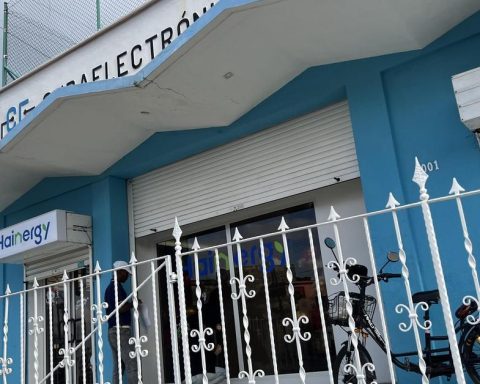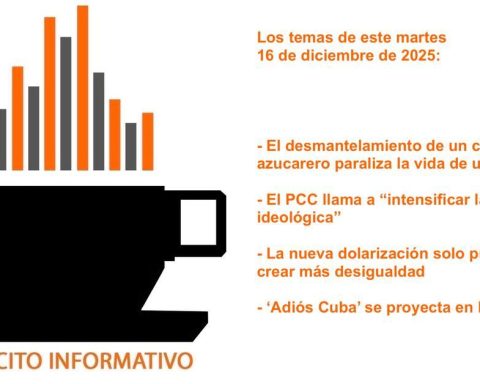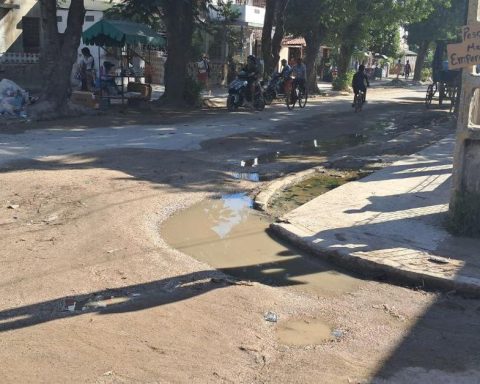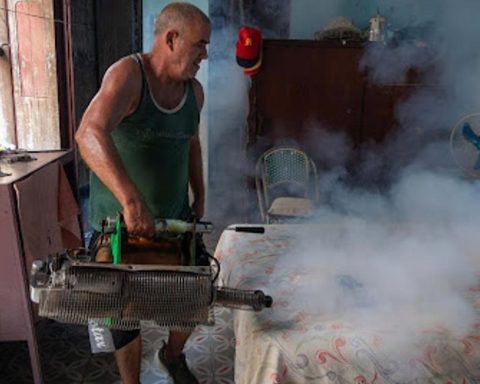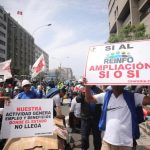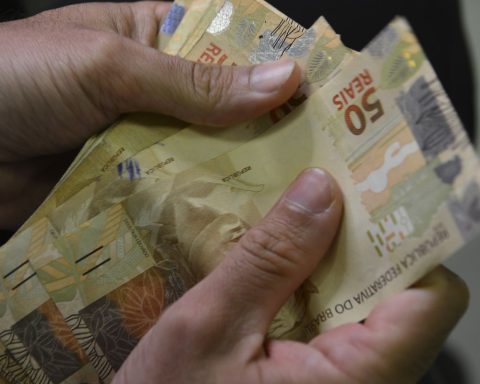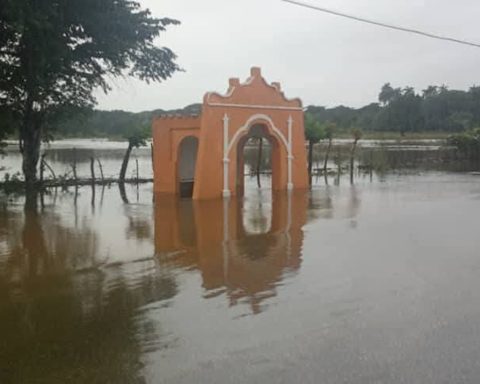83% of Cuban homes were affected this Sunday by power outages, with an average of seven hours, according to the balance of the Electric Union of Cuba, broadcast this Monday on national television and the forecast for today indicates a situation very similar.
According to the data that publish the UNE on your Facebook page – where you have limited comments to certain post-, Yesterday there were generation problems, with a deficit of 764 MW at night and 850 during the day, while today there will be a shortage of 751 MW and 821 at peak. That, if nothing gets worse, because units 6 and 7 of the Mariel thermoelectric plant, 4 and 6 of Nuevitas, 2 of Felton, 4 of Renté and the only one of Otto Parellada are still out of service.
In this context, the official press has published an opinion article by Lazarus Oramasmember of Cubainformation and resident in Spain, entitled Cuba: Electricity crisis or the effects of a war? in which he points out, among other things, that despite inflation “in Cuba there has been no increase in the price of electricity” and compares it with the situation in Puerto Rico, where “with the privatized electricity service, there are also constant blackouts” and electricity has risen 60%.
“If in Cuba groups of people desperately protest the power outages, they assure us that this is how people show ‘their disagreement with the regime’ and take to the streets ‘to ask for freedom.’ But if, in Puerto Rico, the police fire tear gas, at close range, at those protesting against the blackouts, or if they hit journalists, why don’t we read similar terms, such as ‘regime’, ‘repression’ or ‘freedom’?” writes Oramas.
The situation is far from what happens on the island, where scheduled power outages and blackouts come from afar and are a headache for millions of Cubans every summer.
The concession to a private company of the Puerto Rican electricity network occurred in 2020. The instability of the system was evident since Hurricane María left significant damage in 2017. In addition, the debt had grown vertiginously, so the State negotiated with a company to manage and modernize the infrastructure. In April 2022, a major breakdown whose causes have not yet been determined left half the country without power. The discomfort caused by the rise in prices exploded with the blackout and protests took place that finally forced the termination of the contract between the State and the company, Luma Energy.
The situation is far from what happens on the island, where scheduled power outages and blackouts come from afar and are a headache for millions of Cubans every summer, although this 2022 has become unbearable. The cause, according to Oramas, is obvious “and objective: the technological precariousness of the power plants of a country without foreign currency and under the US blockade.”
Different Cuban economists have pointed out that the investment needed by thermoelectric plants or renewable energies would be possible if hotel development were given up, especially at a time when tourism is falling. But the authorities continue to blame solely abroad.
At the end of August, Miguel Díaz-Canel, in a tour of the Felton plant in which he appeared backed by Raúl Castro, assured that the authorities would give whatever was necessary to repair that thermoelectric plant. “They have it easy, taking money out of the budget for hotels that do not reach 50% occupancy rates could be a good idea,” economist Elías Amor said at the time.
That day, the ruler assured that in December the end of the blackouts would come, but not even 24 hours had passed when the Antonio Guiteras thermoelectric plant, in Matanzas, the largest in the country, left the National Electric System. After several very difficult days, in which the generation deficit exceeded 50%, it was possible to stabilize some units in different plants in the country, which led the authorities to optimism.
The newspaper Escambray He asked a few days ago the opinion of his readers on whether the power outages should be eased in view of the improvement in the situation, but things have worsened again.
“In Colombia, an oil country with large foreign investments, there are still half a million homes without electricity,” continues the note from Oramas. “Electrification in Cuba, on the contrary, according to data from the World Bank, is close to 100%. Had you read that?” he says. What it doesn’t write about are the rare times it works.
________________________
Collaborate with our work:
The team of 14ymedio is committed to doing serious journalism that reflects the reality of deep Cuba. Thank you for joining us on this long road. We invite you to continue supporting us, but this time becoming a member of our newspaper. Together we can continue transforming journalism in Cuba.

